
Medieval jug, Canterbury, England, 13th century. Lead-glazed earthenware. H. 11 1/4". (Unless otherwise noted, all photos from author’s archives.)
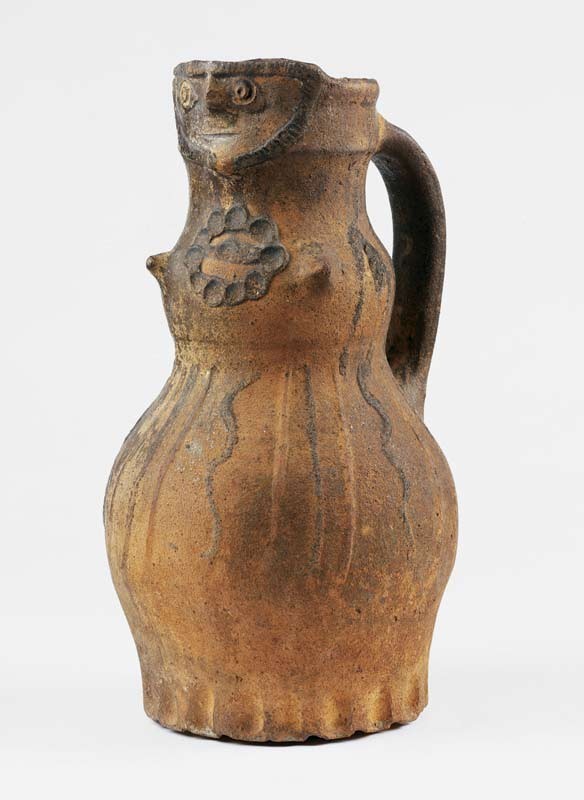
Medieval jug, Midlands, England, 1280–1320. Lead-glazed earthenware. H. 13 7/16". (Courtesy, © Victoria and Albert Museum, London.)
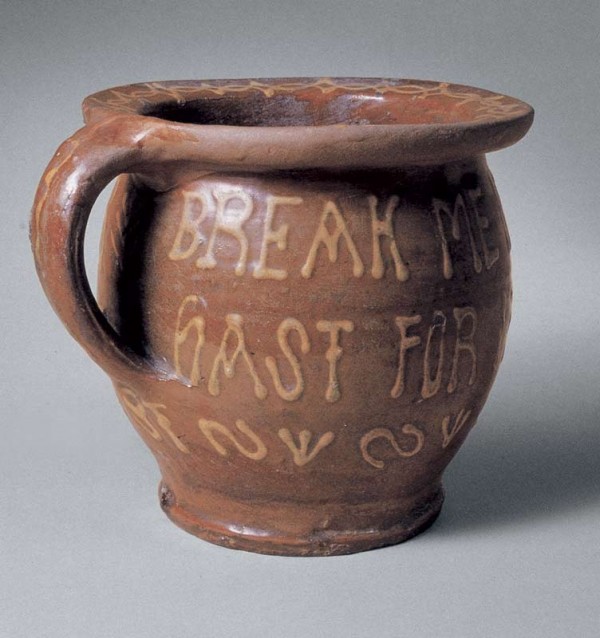
Chamber pot, Harlow, England, ca. 1650. Lead-glazed earthenware. D. 7". Inscribed, in white slip under lead glaze: “BREAK ME NOT IN YOURE HAST FOR I TO NONE WILL GIVE DISTASTE.”
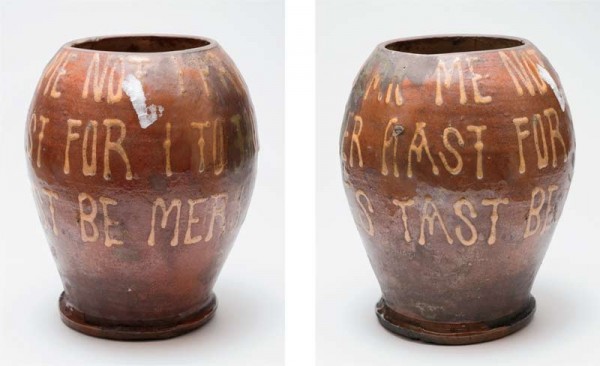
Jug, Harlow, England, ca. 1650. Lead-glazed earthenware. H. 7". Inscribed: “BREAK ME NOT I PRAY IN HAST FOR I TO YOU WILL GIVE DESTAST BE MERRY AND WIES” (Courtesy, Museum of London.) This jug, recovered archaeologically in Harlow, Essex, was filed down, perhaps for repurposing as a vase. It bears a version of the same verse as the chamber pot illustrated in fig. 3.
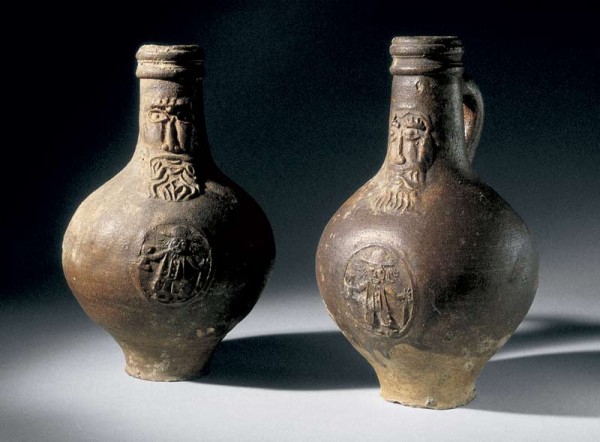
Bellarmine bottles, Woolwich, England, ca. 1660. Salt-glazed stoneware. H. 8 1/4".
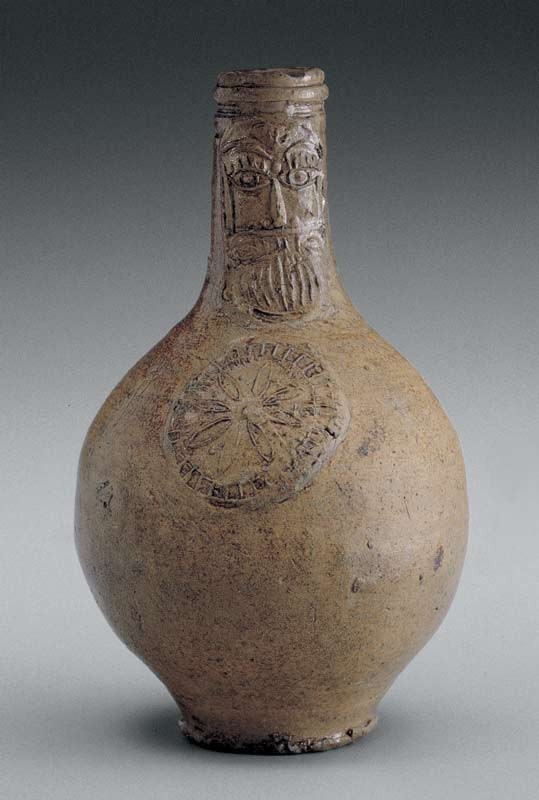
Bellarmine bottle, possibly Chelsea, England, ca. 1672. Salt-glazed stoneware. H. 8 7/8". (Chipstone Foundation.)

Pew group, Staffordshire, England, ca. 1750. Salt-glazed stoneware. H. 6 3/8". (Courtesy, © Victoria and Albert Museum, London, C.6-1975.) The details are picked out in brown slip.
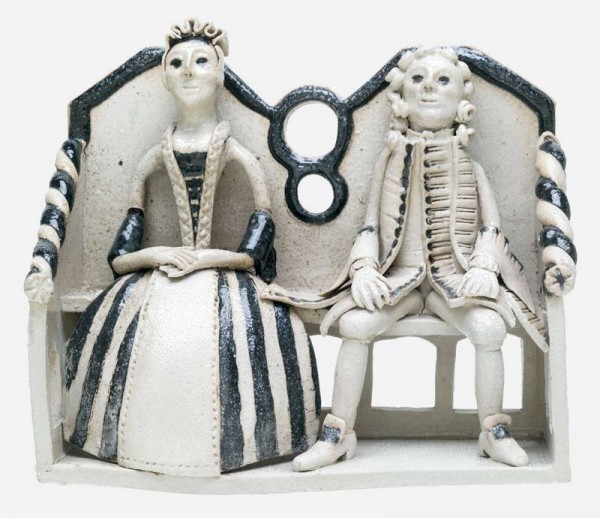
Pew group, Staffordshire, England, ca. 1750. White salt-glazed stoneware. Dimensions not recorded. (Courtesy, National Museum of American History.)
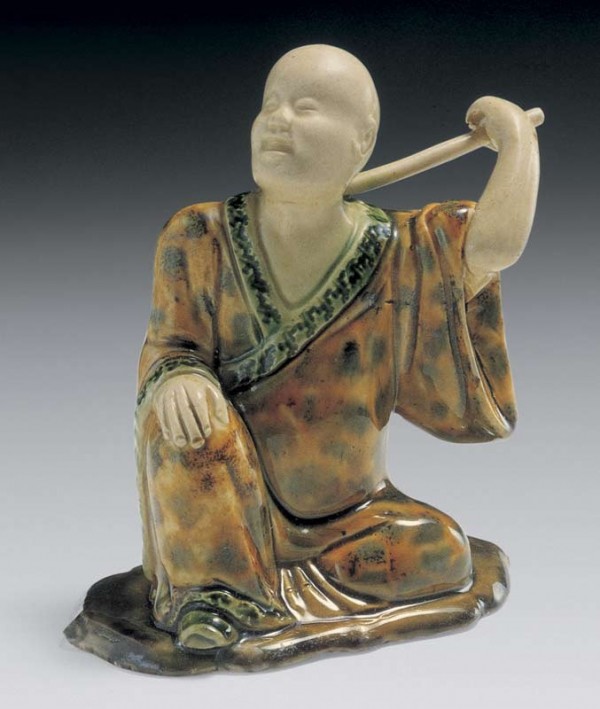
Chinese figure, Staffordshire, England, ca. 1750. Lead-glazed earthenware. H. 4 1/2". (Courtesy, Colonial Williamsburg Foundation, Weldon Collection.)
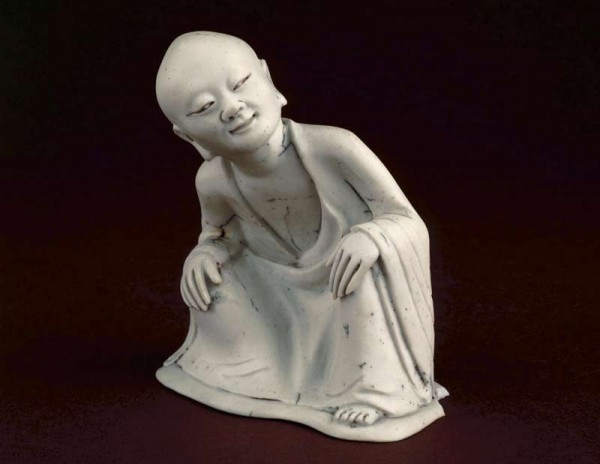
Chinese figure, Jingdezhen, China, ca. 1740. Hard-paste porcelain. H. 3 1/2". (© The Trustees of the British Museum; photo © Trustees of the British Museum, PDF,A.495.)
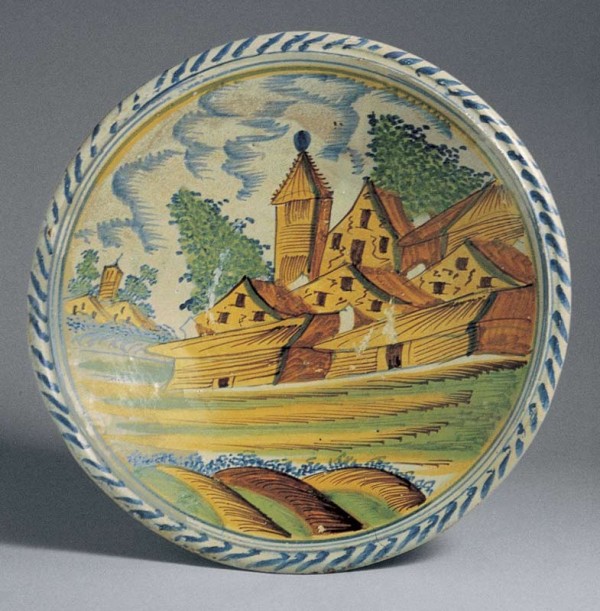
Dish, Southwark, England, ca. 1660. Tin-glazed earthenware. D. 15 1/4". (Private collection.)
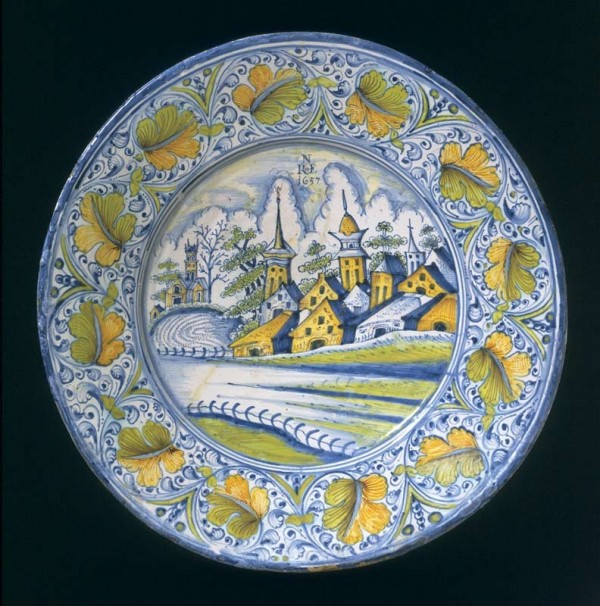
Dish, Richard Newnham, Pickleherring Pottery, Pickleherring, England, 1657. Tin-glazed earthenware. D. 18 1/2". (Courtesy, © Victoria and Albert Museum, London, C.57-1971.)

Tile panel, London, England, ca. 1720. Tin-glazed earthenware. Each tile approx. 5" square; overall panel 4' 6 1/2" x 2' 6". Approximately thirty blank tiles fill in for the missing ones.
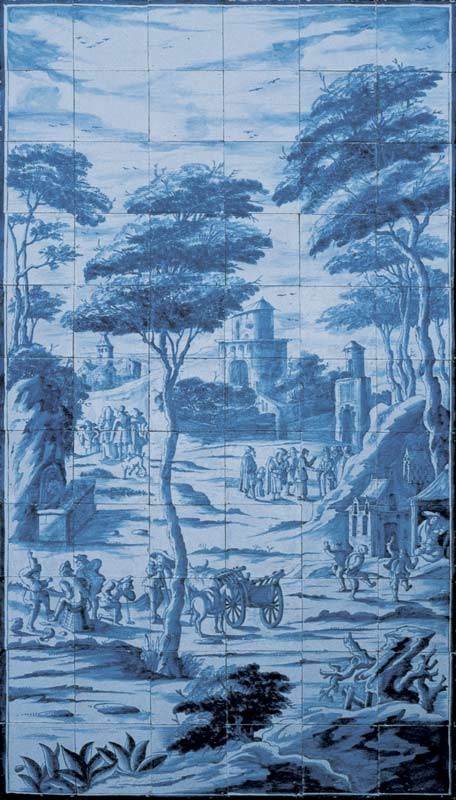
The tile panel illustrated in fig. 13, fully reassembled. (Courtesy, Allen Gallery of the Curtis Museum, Hampshire.)
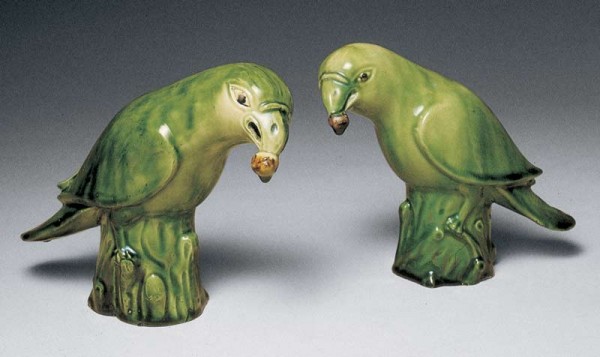
Pair of parrots, Staffordshire, England, ca. 1755. Lead-glazed earthenware. H. 6". (Courtesy, Colonial Williamsburg Foundation, Weldon Collection.)

Pair of parrots, Johann Joachim Kändler (1706–1775), Meissen Porcelain Manufactory, Leipzig, Germany, ca. 1745. Hard-paste porcelain. H. 7 1/4". (Courtesy, © Victoria and Albert Museum, London, Given by Mrs. O. J. Finney in memory of Oswald James Finney, C.4-1984.)
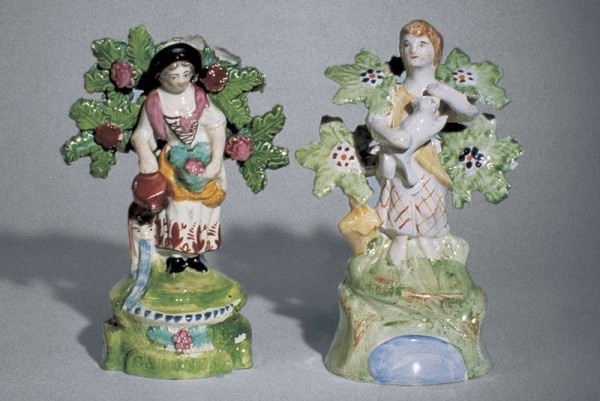
Left: Gardener, Ralph Salt, England, ca. 1820. Lead-glazed earthenware. H. 6 11/16". Mark, on reverse: SALT. Right: Shepherdess, England, 1979. Lead-glazed earthenware. H. 5 5/8". Mark, on scroll on reverse: WALTON (Courtesy of The Potteries Museum & Art Gallery, Stoke-on-Trent.)
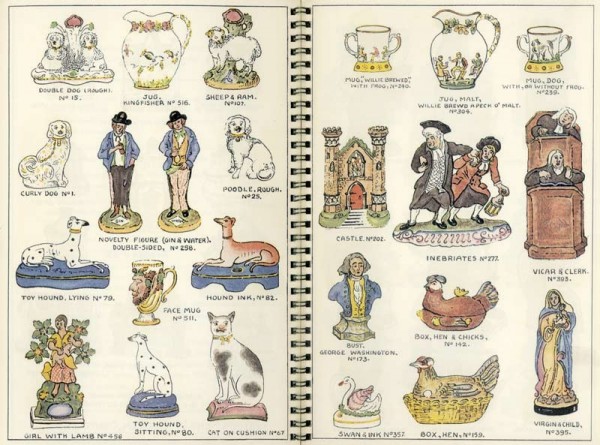
Two pages from Old Staffordshire Pottery, William Kent, Burslem, England, 1955. William Kent produced the catalog to list the “Astbury” figures he offered for sale. The figures were based on older models.
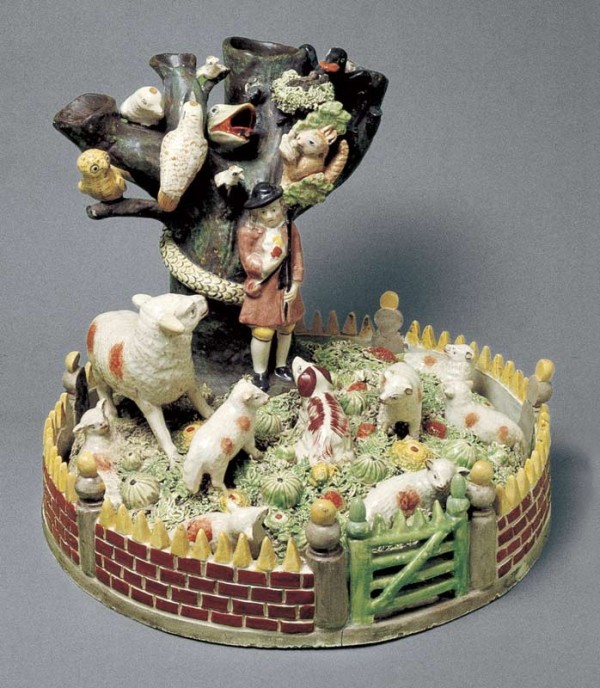
Shepherd group, Staffordshire, England, ca. 1820. Lead-glazed earthenware. H. 9 7/16". (Courtesy of The Potteries Museum & Art Gallery, Stoke-on-Trent.)
